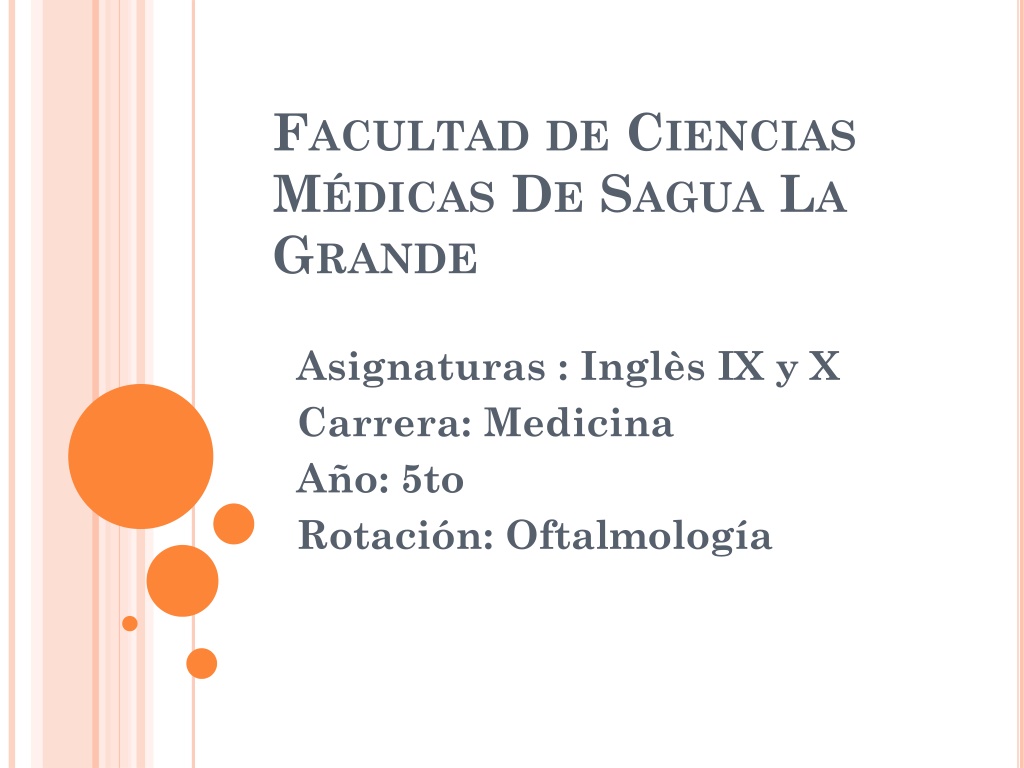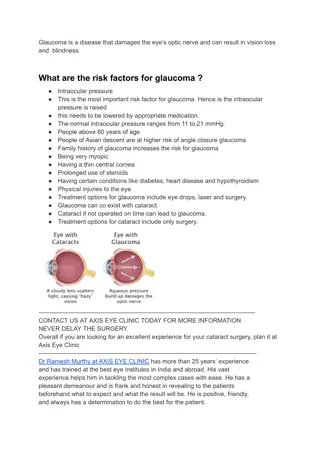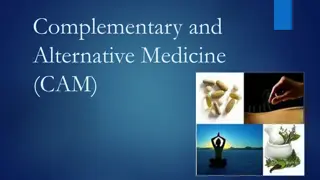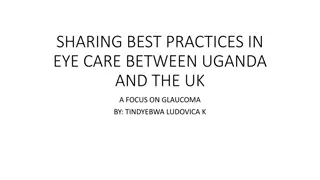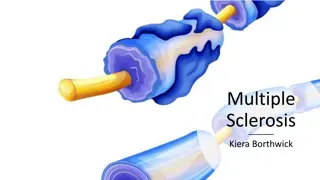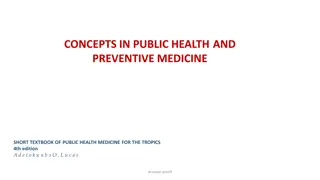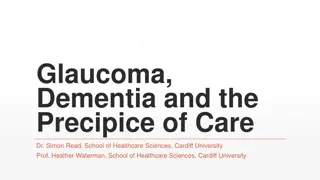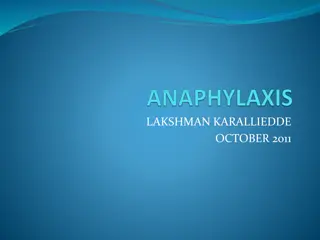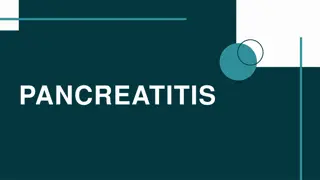Understanding Glaucoma: Causes, Symptoms, and Treatment in Medicine Studies
Glaucoma is a group of eye diseases affecting the optic nerve and causing vision loss due to elevated eye pressure. It includes various types such as angle closure, open-angle, and normal tension glaucoma. Symptoms can vary from blurred vision to tunnel vision, and risk factors include age, family history, and medical conditions like diabetes. Treatment involves medication, eye drops, or surgery to manage eye pressure and prevent optic nerve damage. Complications may arise, requiring careful monitoring in medicine studies.
Download Presentation

Please find below an Image/Link to download the presentation.
The content on the website is provided AS IS for your information and personal use only. It may not be sold, licensed, or shared on other websites without obtaining consent from the author. Download presentation by click this link. If you encounter any issues during the download, it is possible that the publisher has removed the file from their server.
E N D
Presentation Transcript
FACULTAD DE CIENCIAS M DICAS DE SAGUA LA GRANDE Asignaturas : Ingl s IX y X Carrera: Medicina A o: 5to Rotaci n: Oftalmolog a
GLAUCOMA Profesora asistente: Jessie Sarduy Santana Profesora auxiliar: Elizabeth Finalet Marreos
OBJECTIVES: To describe the main features of Glaucoma
GLAUCOMA It is a group of eye diseases that affect the optic nerve and cause vision loss.Most but not all of these diseases typically produce elevated inside the eye. pressure
TYPESOF GLAUCOMA Angle closure Glaucoma Acute Chronic Open angle Glaucoma. Normal tension glaucoma
Pigmentary Glaucoma Secondary Glaucoma. Pseudoexfoliative Glaucoma. Pediatric or Congenital glaucoma
SYMPTOMSOF GLAUCOMA Gradual vision deterioration. Blurred vision. Tunnel vision. Foggy vision. Sensivity at light. Halos around brigth ligths. Mild eye pain. Nausea. Headaches
RISKFACTORSOF GLAUCOMA People over 60. Family members with Glaucoma. Steroid Users. Eye injury. High myopia. Diabetes. HTN
CAUSESANDTREATMENT Increasement of the blood pressure within the eye may lead to develop the condition. Depending on the type of Glaucoma it can be controlled.
Treatment includes medication ,usually prescription of eye drops or surgery to lower the pressure in the eye and prevent further damage to the optic nerve.
COMPLICATIONSOF GLAUCOMA Intraoperative and postoperative suprachoroidal hemorrage Visual loss. Hyphema. Hypotony
EXERCISE Glaucoma is another eye disorder which can lead to cataracts and blindness. A patient having this condition wants information about it and the surgical procedure to treat it. Work in pairs and prepare a doctor-patient dialogue Ask the doctor: What glaucoma is. Why surgery is necessary. What the procedure is called. If there are any risks. Where the operation will be done. If any tests are needed. How the surgery is done. If any complications can be expected. How long it would be necessary to stay in hospital his information.
BIBLIOGRAFIA English through Medicine II Students and teachers book Bedside English
